Parts Of A Flower
The main parts of a flower are the sepals, petals, stamens and carpels. Flowers that have all four of these parts are known as complete flowers. The stamens are the male parts; the carpels are the female parts. Most flowers have both male and female parts.
On this page you'll learn how to identify the basic flower parts and also find out what they do...
Parts Of A Flower Diagram
The diagram below shows the parts of a typical flower.
Use the page index, below, to find out what each flower part does.
Notes:
- Some flowers lack one or more of the four main parts (petals, sepals, stamens and carpels). Flowers such as these are known as incomplete flowers.
- The carpels of many flowers are fused (joined together) into a single structure known as a pistil, as shown in the diagram above.
- Most flowers have both male parts and female parts, but the flowers of some species produce flowers that are either male (i.e. lacking female parts) or female (i.e. lacking male parts).
Page Index
The Male Parts Of A Flower (Androecium)
The Female Parts Of A Flower (Gynoecium)
The Perianth: The Non-Reproductive Outer Flower Parts
How To Recognize The Parts Of A Flower
The Four Main Flower Parts
- Sepals: the protective, leaf-like outer parts of a flower.
- Petals: the often colorful structures that attract pollinating animals to the flower.
- Stamens: the male parts of a flower. Each stamen consists of a stalk called a filament and a pollen-producing tip called an anther. The stamens of many flowers are designed to shed pollen onto a pollinating animal such as a bee or hummingbird.
- Carpels / Pistil: the female parts of a flower. A flower's carpels are often fused into a single structure known as a pistil. At the tip of the carpel / pistil is a pollen-collecting area known as the stigma. This is where a pollen grain must be deposited in order for pollination to take place.
Flowers in which all four of these parts are present are known as complete flowers. Not all species produce flowers with all four parts; the flowers of plants that don't are known as incomplete flowers.
- You can find out more about the life cycle of a flower on this page: The Life Cycle Of A Flower
Whorl
A flower’s sepals, petals, stamens and carpels grow in rings known as whorls around the receptacle.
(You might hear botanists talking about a 'whorl of petals', 'whorl of stamens', etc.)
The Male Parts Of A Flower (The Androecium)
Surrounded by a whorl of sepals and a whorl of petals (which together known as the perianth) are the reproductive parts of a flower.
The male parts of a flower, which collectively are called the androecium, are arranged in a whorl around the flower's female parts (the Gynoecium).
Stamen
The stamen is the male part of the flower. It consists of a stalk called a filament and a head called an anther. The number of stamens in a flower varies from species to species.
Anther
The anther is the bulbous head at the tip of the filament. It contains microsporangia, or pollen sacs, in which pollen is produced.
Pollen is the microscopic, dust-like powder in which a plant’s male reproductive cells are dispersed.
The anthers are usually positioned in such a way that a pollinator (an animal such as a bee or a hummingbird) will brush against them while visiting the flower. This results in pollen being transferred to the pollinator's body, where it will be transported to the female parts of another flower (see the Life Cycle of a Plant).
Filament
The filament is the stalk that bears the anther.
The Female Parts Of A Flower (The Gynoecium)
At the center of the flower, surrounded by the whorl of stamens, is the gynoecium – the flower’s female parts.
Carpel
The carpel is the individual female reproductive part of a flower. It consists of an ovary, a style and a stigma.
Depending on species, a flower may have either a single carpel, or several. In many species the carpels are fused (joined), forming a structure known as a pistil.
Stigma
The stigma is a located at the tip of the carpel / pistil. It offers a receptive, often sticky or feathery, surface that captures pollen. Upon landing on the stigma, a pollen grain (of the same species) will begin to germinate (see the Life Cycle of a Plant).
Style
The style is the stalk between the stigma and the ovary. In some species (such as tulips and poppies) it is very short and / or indiscernible from the stigma and ovary.
When a grain of pollen germinates, it extends a structure called a pollen tube through the style to the ovary. The male reproductive cells from the pollen will then travel through the pollen tube to fertilize the egg.
Ovary
Located at the base of the carpel or pistil is the ovary. Chambers within the ovary contain one or more ovules. These egg-containing structures, once fertilized, will become seeds.
If the ovary is positioned above the calyx and corolla, it is said to be superior; if it is below the calyx and corolla it is said to be inferior (see Types of Flower).
Pistil
In many species the individual carpels are fused, creating a single structure known as a pistil. A pistil may either have a single, shared stigma and style, or a stigma and style for each fused carpel.
The celandine poppy has a pistil rather than individual carpels:
The Perianth: The Non-Reproductive Outer Parts Of A Flower
The perianth is the non-reproductive, outer part of a flower. It consists of the sepals and the petals (calyx and corolla - see below). The perianth surrounds the flower's reproductive parts.
In some species either the sepals and / or petals may be wholly or partially fused (joined). The petals of the harebell in the photo above are partially fused, creating the flower's characteristic bell shape.
Sepal
The outermost part of a flower consists of a whorl of sepals. A sepal is a leaf-like structure that is often green in color. The sepals of some flowers are brightly-colored and resemble petals (see tepals, below).
Calyx
The entire whorl of sepals is known as the calyx. Its function is to protect the inner parts of the flower during the bud stage.
Petal
Working inwards, the next whorl after the sepals / calyx consists of the flower's petals.
The main function of petals is to attract pollinators – animals that transfer pollen from flower to flower. For this reason, a flower’s petals are often brightly-colored. The petals of many flowers secrete scents from glands at their bases.
The petals of some plant species have elaborate adaptations that enable only specific animals to gain access to the reproductive parts of the flower.
Corolla
The corolla is the collective term for a flower’s whorl of petals.
The Base Of A Flower
Peduncle
The peduncle is the stalk to which a solitary flower or inflorescence (a cluster of individual flowers) is attached.
Each of the individual flowers in an inflorescence is attached to the main stem by a stalk known as a pedicel.
- You can find out more about the various types of inflorescence on this page: Types of Flower
Receptacle
The receptacle is the base of the flower. It is the part to which all of the other parts of the flower are attached.
Other Flower Parts
Nectary
Often found on the receptacle at the base of the petals or stamens (see below) are a flower’s nectaries. These are areas of tissue that produce nectar, the sugary substance on which pollinators feed.
(Depending on the species, nectaries may be found in other parts of a plant.)
Tepals
When a flower’s sepals and petals look the same, they are known as tepals. Examples of flowers with tepals (rather than sepals and petals) include tulips, lilies and daffodils (see photo below).
Corona
Some flowers have an additional structure known as a corona between the petals and stamens. This feature is particularly noticeable in flowers of genus Narcissus (daffodils); in these species the corona is commonly known as the 'trumpet'.
How To Recognize The Parts Of A Flower
Knowing the parts of a flower is highly beneficial when attempting to identify a species in the field – the descriptions in many flower identification books require a basic understanding of flower parts.
There is a wide variety in the shape, size and structure of flowers, and it is occasionally difficult to discern the individual parts of a flower.
If you're having trouble identifying a flower, bear in mind that not all flowers are complete; many species lack one or more of the four main whorls (sepals, petals, stamens and carpels).
(For example, whereas most flowers are ‘bisexual’ (they have both male and female parts), the flowers of some species are ‘unisexual’ and lack either male or female parts.)
The sepals of some complete flowers (e.g. tulips) closely resemble petals.
In some species either the petals and / or the sepals may be fused (joined), creating a single structure that may be tubular or bell-shaped.
The flowers of many plant species grow in clusters known as inflorescences. A single inflorescence may consist of hundreds of individual flowers. The ‘flowers’ of plants such as daisies are actually inflorescences that consist of many individual flowers.
If you have any questions feel free to ask them in the comments section below.
Further Reading
You can discover more about the amazing world of plants on the following pages:
- A complete botany lesson on one page: Plants: The Ultimate Guide to the Plant Kingdom
- You can find out about the various types of inflorescence on this page: Types of Flower
- Discover the diversity of the plant kingdom Plantae: Different Types of Plant with Pictures and Facts
- Find out about the reproductive strategies of every major plant group: Life Cycle of a Plant: How Plants Reproduce

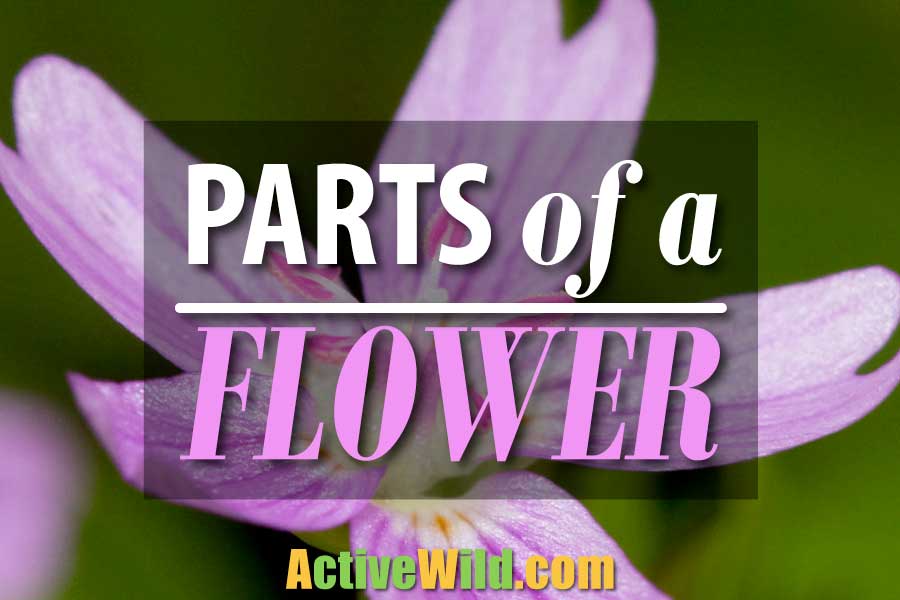
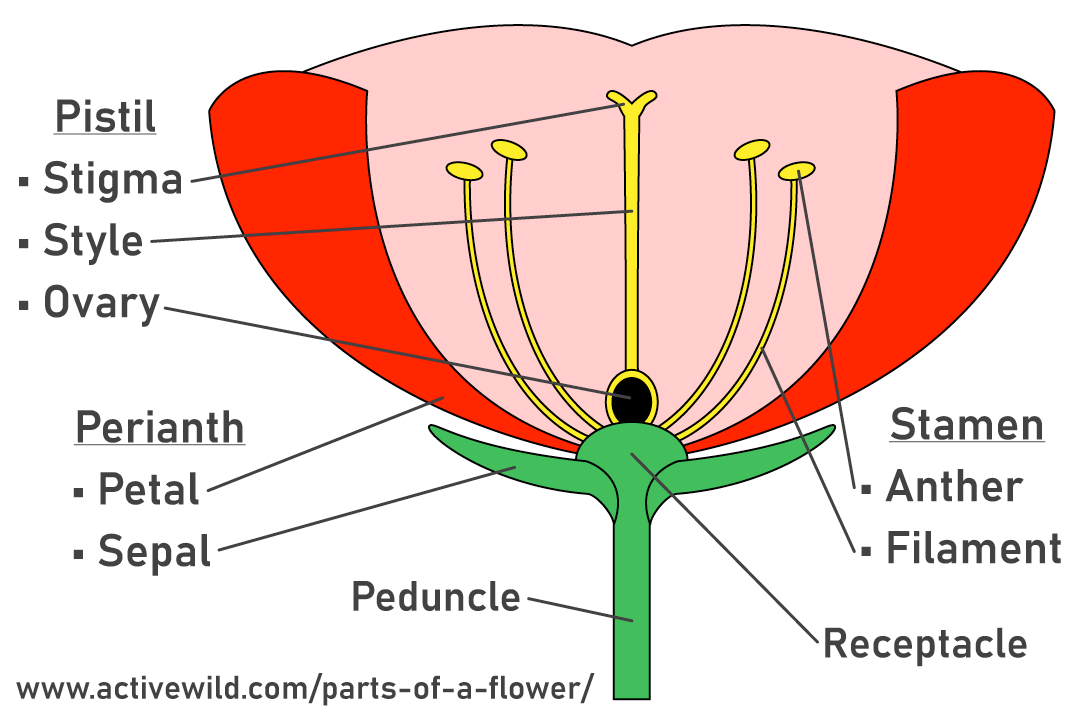

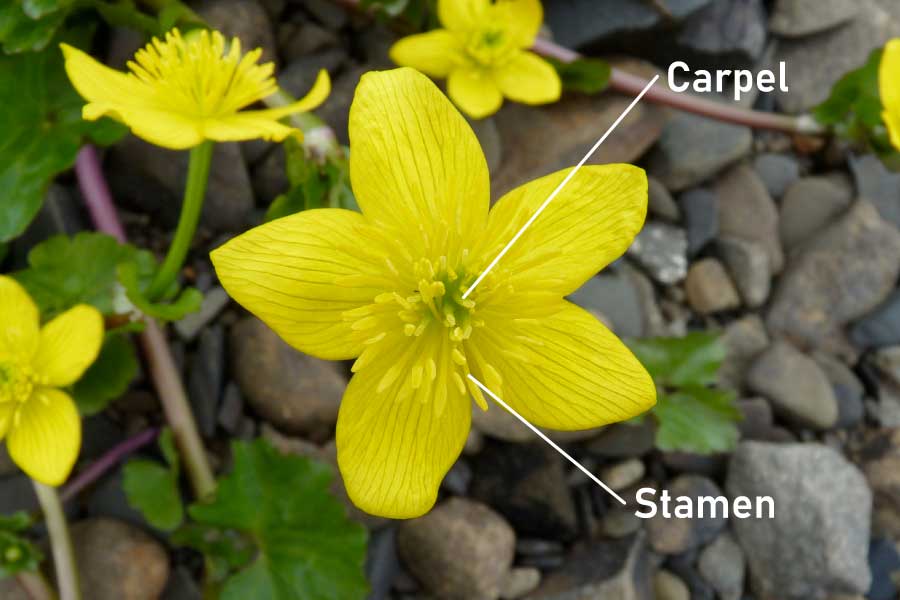
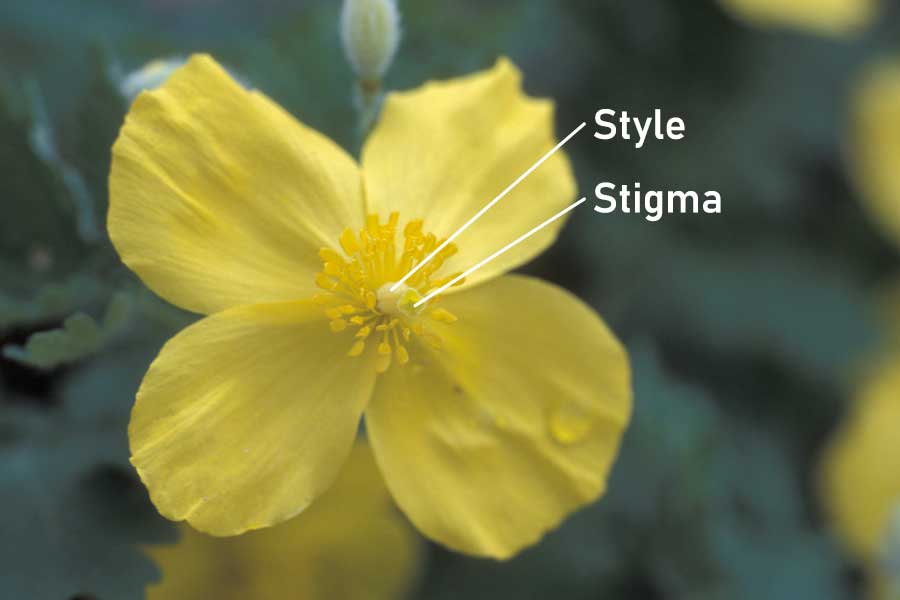
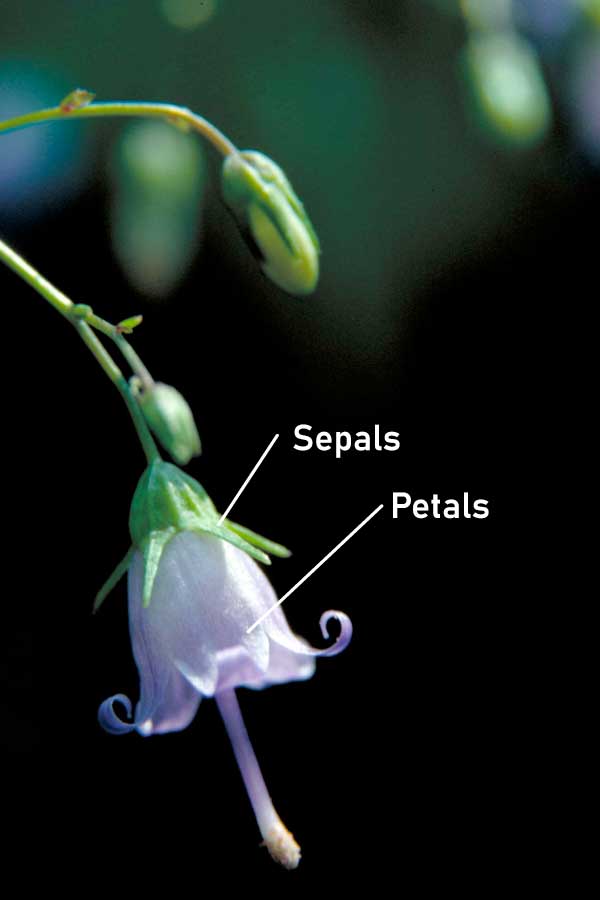
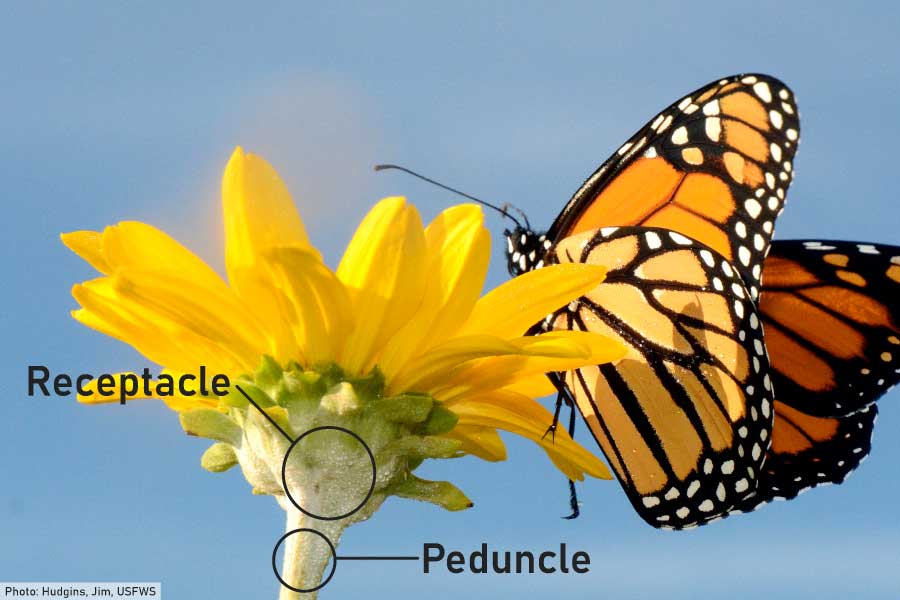
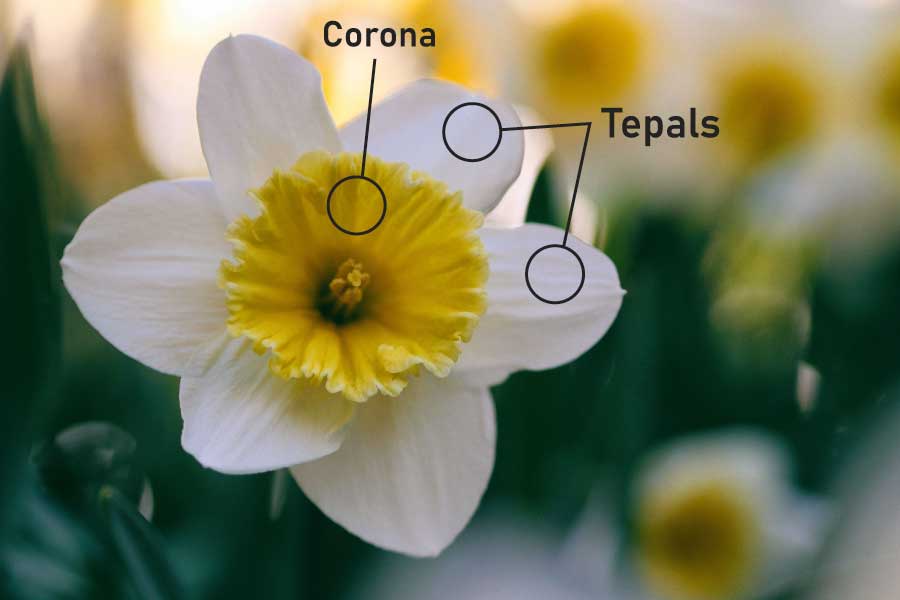

Which flowers have a center called Corona ? Thus far i know only of the passion flower family are there others outside of this ?
In addition to passion flowers (genus Passiflora), the flowers of plants of genus Narcissus (including daffodils and narcissi) have a corona.